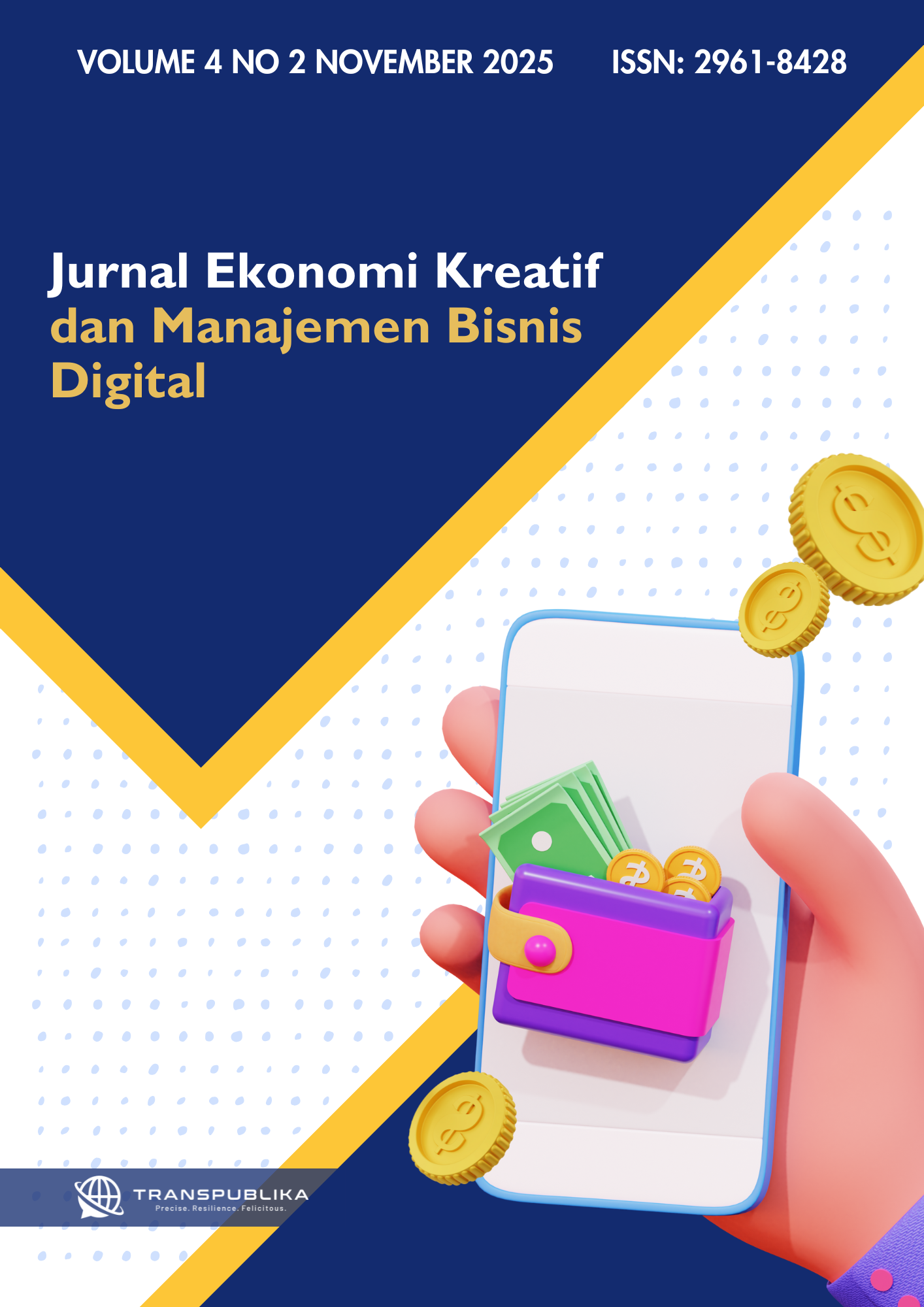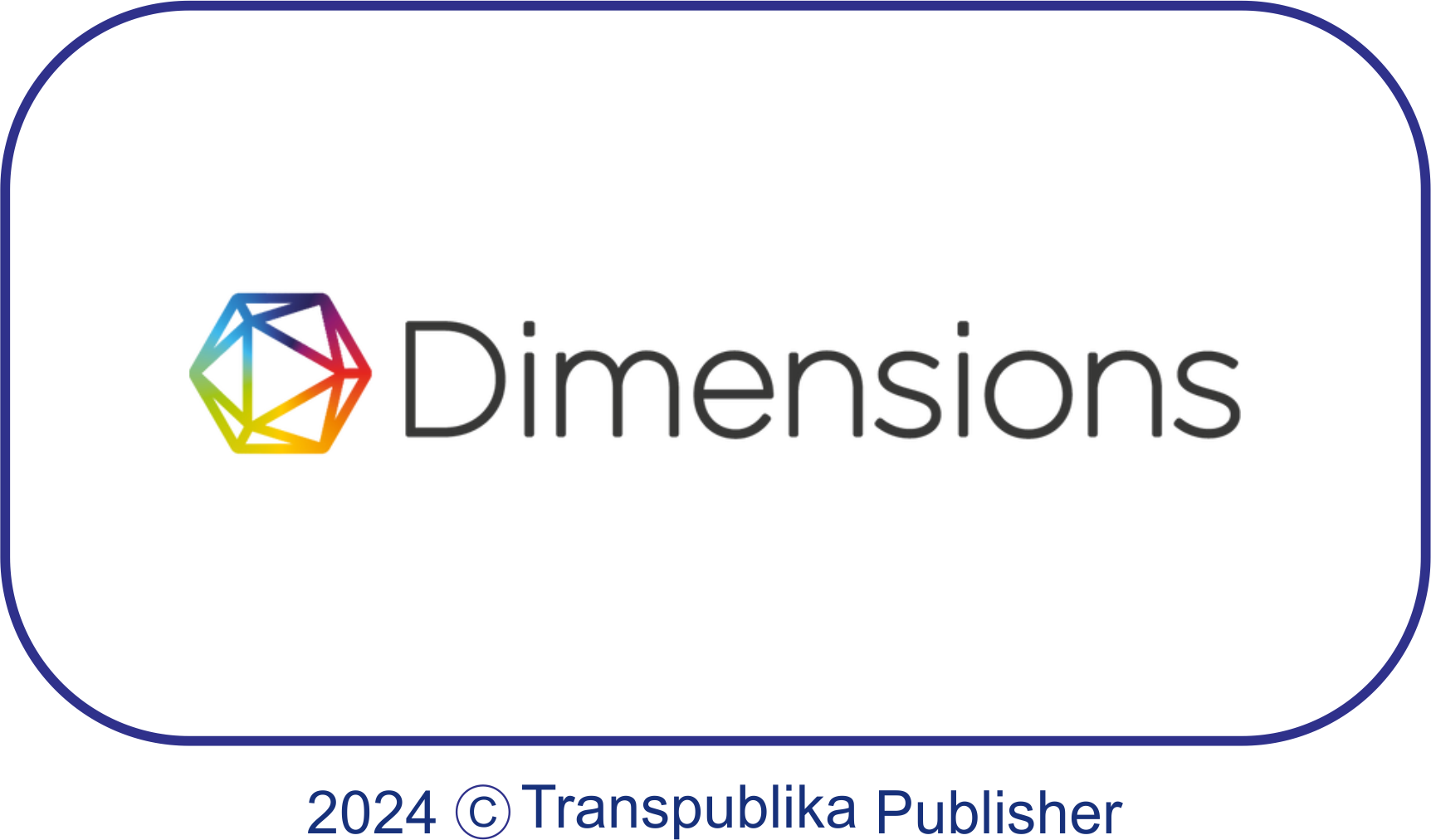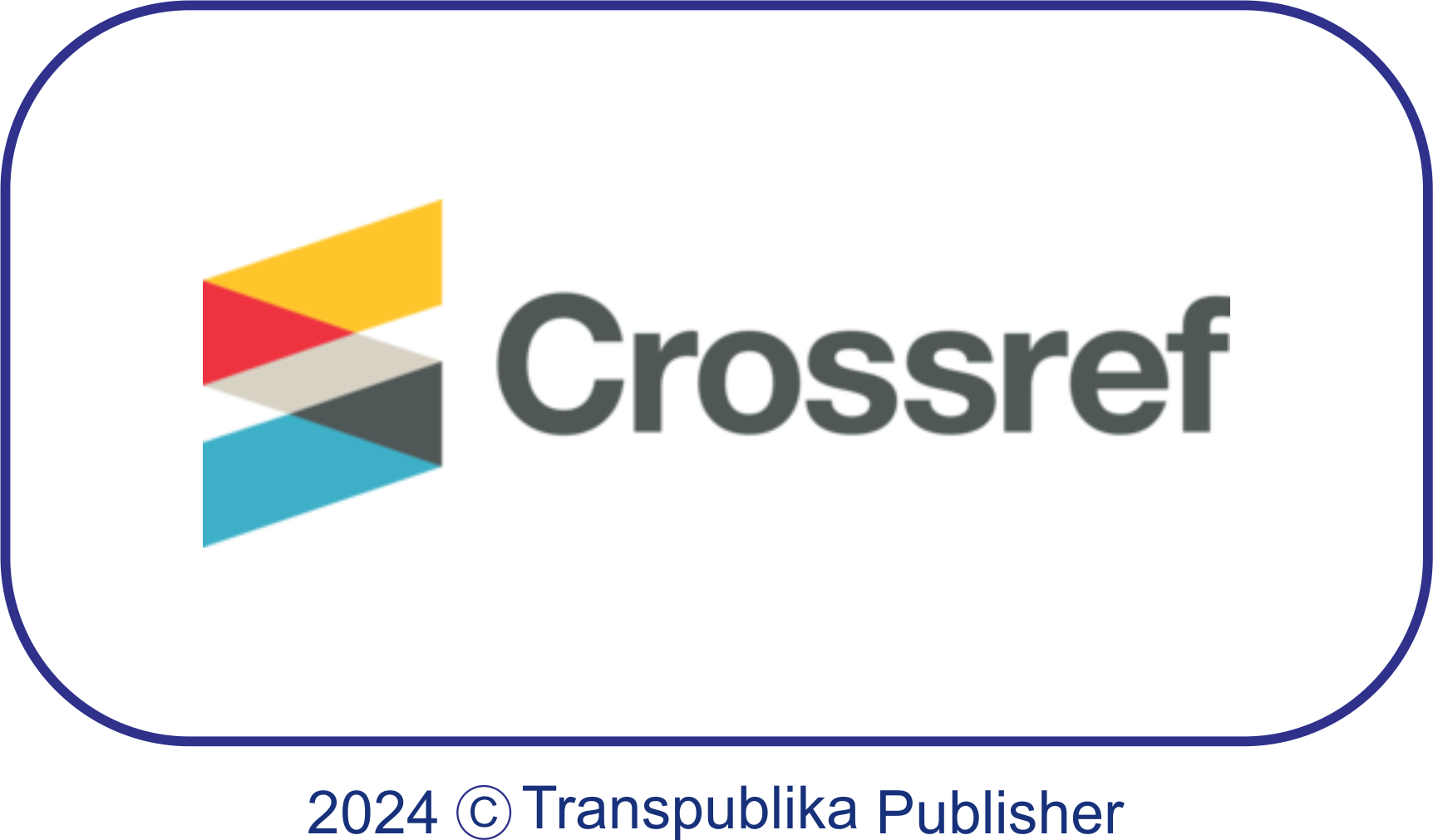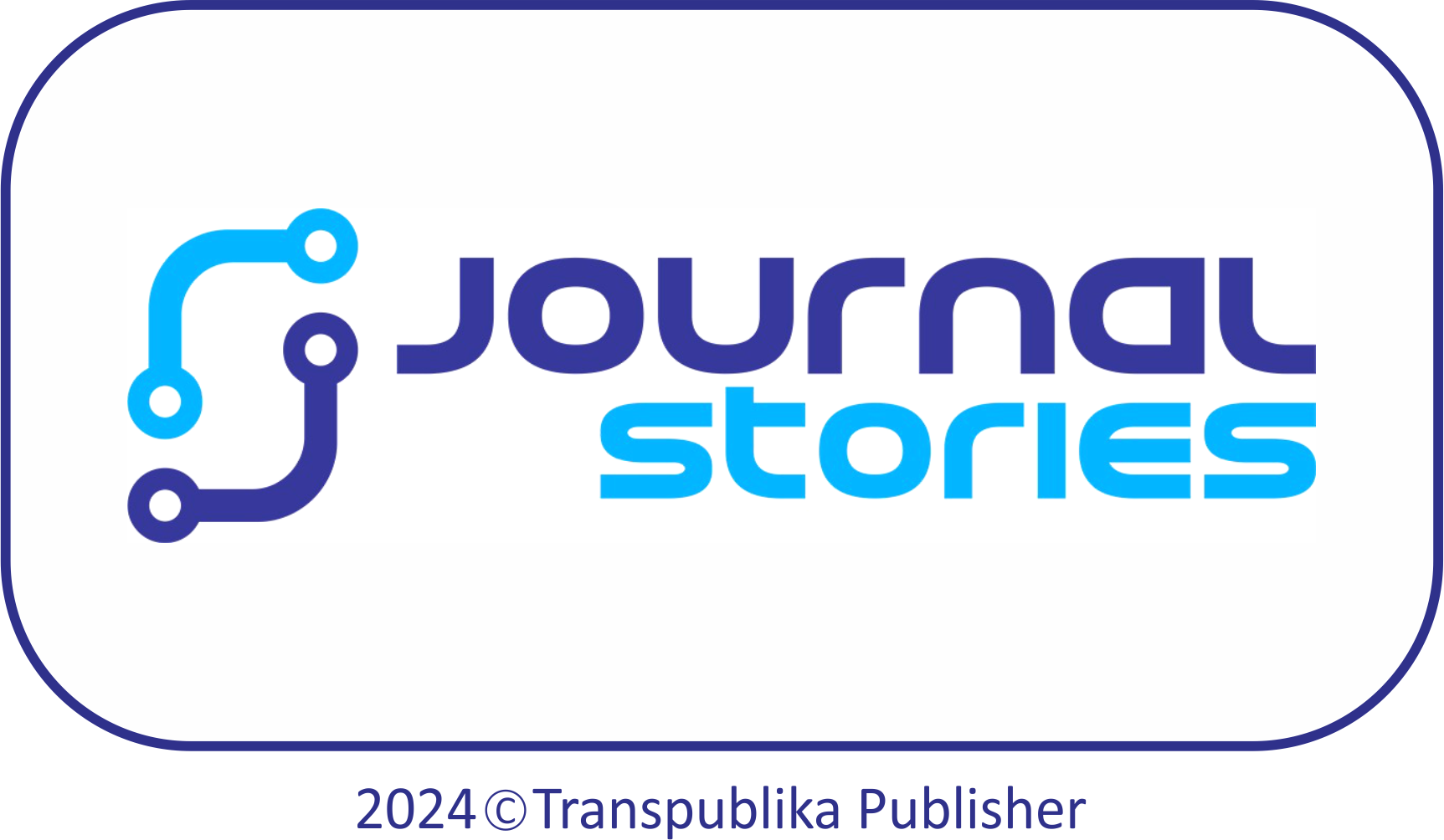The Effects of Asset Turnover and Accounts Receivable Turnover on The Profitability of Hotel X
Abstract
Profitability is a key indicator of hotel financial performance success that is heavily influenced by the effectiveness of asset utilization and accounts receivable management. In the capital-intensive and competitive hospitality industry, the ability to optimize assets and accelerate cash flow from receivables becomes an important factor in maintaining business sustainability. This research aimed to examine the effect of asset turnover and accounts receivable turnover on profitability at Hotel X. This research employed a quantitative approach with secondary data derived from the financial statements of Hotel X, for 2020–2024. Data collection techniques include non-participant observation and a documentation study. The data analysis method is multiple linear regression with the Statistical Product and Service Solutions (SPSS) version 30 software. The results indicate that both asset and accounts receivable turnover positively and significantly affect profitability, both partially and simultaneously. This suggests that efficient management of assets and receivables can enhance the hotel’s financial performance in generating profit. The coefficient of determination shows that the independent variables explain 86.2% of the variability in profitability, while other factors outside this study influence the remaining 13.8%. The evidence confirm that efficient asset and receivables management contributes significantly to improving the profitability of Hotel X. Therefore, managerial strategies that focus on resource optimization and improvement of collection systems can strengthen the hotel's financial performance and competitiveness in the future.
References
Auliana, N. U. (2022). Standar Prosedur Check-In dan Check-Out pada Hotel Duta Syari’ah Palembang. Jurnal Pariwisata Darussalam, 1(2), 64–74.
Bachri, B. (2024). Peran Hospitality Industry Dalam Pengembangan Pariwisata Berkelanjutan. Khasanah Ilmu-Jurnal Pariwisata Dan Budaya, 15(2), 163–171.
Barney, J. (1991). Firm resources and sustained competitive advantage. Journal of Management, 17(1), 99–120.
Brigham, E. F., & Ehrhardt, M. C. (2017). Financial Mangement: Theory & Practice (Fifteenth). Cengage Learning.
Cahyasari, D., & Koli, M. O. C. (2024). Peran likuiditas dan aktivitas terhadap profitabilitas PT. Hotel Sahid Jaya Internasional Tbk. Kinerja, 7(02), 378–390.
Gunawan, R., Widiyanti, M., Malinda, S., & Adam, M. (2022). The effect of current ratio, total asset turnover, debt to asset ratio, and debt to equity ratio on return on assets in plantation sub-sector companies listed on the Indonesia stock exchange. International Journal of Economic, Business, Accounting, Agriculture Management and Sharia Administration (IJEBAS), 2(1), 19–28.
Herison, R., Sahabuddin, R., Azis, M., & Azis, F. (2022). The effect of working capital turnover, accounts receivable turnover and inventory turnover on profitability levels on the Indonesia Stock Exchange 2015-2019. Psychology And Education, 59(1), 385–396.
Kasmir. (2019). Analisis laporan keuangan (Edisi Revisi 2019). Depok: PT Raja Grafindo Persada.
Lumbantobing, S. P., Adwimurti, Y., & Selfiani, S. (2023). Pengaruh current ratio, debt to asset ratio dan total asset turn over terhadap net profit margin. Jurnal Akuntansi, Keuangan, Pajak Dan Informasi (JAKPI), 3(2), 16–34.
Mahendra, D. W., & Hanifa, N. (2022). Pengaruh Pengeluaran Pemerintah, Investasi dan Tenaga Kerja Terhadap Pertumbuhan Ekonomi Jawa Timur. Independent: Journal of Economics, 2(1), 31–46. https://doi.org/10.26740/independent.v2i1.43626
Matias, F., Rebelo, S., Andraz, G., & Guerreiro, J. (2024). The Influence of Firm Characteristics and Macroeconomic Factors on Financial Performance: Evidence from the Portuguese Hotel Industry. Economies, 12(11), 306. https://doi.org/10.3390/economies12110306
Muhibah, M., & Yunus, T. S. (2020). Pengaruh Perputaran Piutang Terhadap Return on Assets (ROA) pada PT. Summarecon Agung, Tbk. AkMen Jurnal Ilmiah, 17(3), 464–476.
Pangestika, K., & Muharam, H. (2024). Pengaruh liquidity, intangible assets, working capital, debt equity ratio, dan Covid-19 terhadap profitabilitas perusahaan non keuangan (Studi pada perusahaan non keuangan yang terdaftar di BEI tahun 2017–2022). Diponegoro Journal of Management, 13(6), 1–9.
Ratnasari, D. P., & Cipta, W. (2021). Pengaruh Perputaran Kas dan Perputaran Piutang Terhadap Profitabilitas Pada Perusahaan Sub Sektor Perkebunan di BEI. Jurnal Akuntansi Profesi, 12(1), 185–192. https://doi.org/10.23887/jap.v12i1.31658
Suparman, S., & Muzakir, M. (2023). Regional inequality, human capital, unemployment, and economic growth in Indonesia: Panel regression approach. Cogent Economics & Finance, 11(2), 2251803.
Umrah, K., & Amin, A. M. (2022). Pengaruh Perputaran Modal Kerja, Perputaran Kas, Perputaran Piutang, dan Perputaran Persediaan Terhadap Profitabilitas Perusahaan Sub Sektor Food And Beverage Yang Terdaftar di Bursa Efek Indonesia. Jurnal Bisnis Kolega, 8(2), 84–110.
Wajo, A. R. (2021). Effect of cash turnover, receivable turnover, inventory turnover and growth opportunity on profitability. ATESTASI: Jurnal Ilmiah Akuntansi, 4(1), 61–69. https://doi.org/10.57178/atestasi.v4i1.165
Wernerfelt, B. (1984). A resource‐based view of the firm. Strategic Management Journal, 5(2), 171–180.
Widyakto, A., Pradiptya, A., Kusumawati, C. A., & Fresiliasari, O. (2024). The Role of ROA in Mediating DER, Current Ratio, and TATO on Firm Value. Jurnal Penelitian Ekonomi Dan Bisnis, 9(2), 114–128. https://doi.org/10.33633/jpeb.v9i2.11086
Wildan, M. S., & Damayanti, I. (2020). Analisis Pengaruh Perputaran Kas, Perputaran Piutang Dan Perputaran Total Aset Terhadap Profitabilitas Pada Perusahaan Ritel Di Indonesia. Jurnal Manajemen Dan Keuangan, 9(3), 320–331.
Wiryanata, I. G. N. A. (2022). Efektifitas Pengadaan Bahan Makanan dalam Penentuan Harga Jual. Jurnal Gastronomi Indonesia, 10(2), 108–117.
Yusup, W. E., & Hariani, S. (2023). The effect of receivables turnover, inventory turnover and current ratio on profitability. Jurnal Riset Manajemen Dan Bisnis, 8(1), 23–32. https://doi.org/10.22441/jimb.v9i3.18482
Copyright (c) 2025 Ni Kadek Vidya Aishwanari, I Gusti Ngurah Agung Wiryanata, A.A. Istri M. Septiviari

This work is licensed under a Creative Commons Attribution 4.0 International License.










.png)




.png)
.png)











.jpg)
.png)


